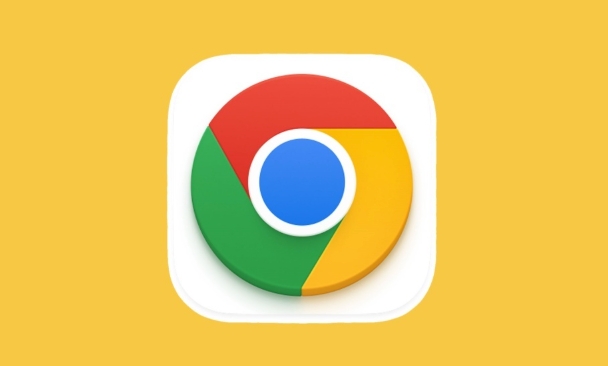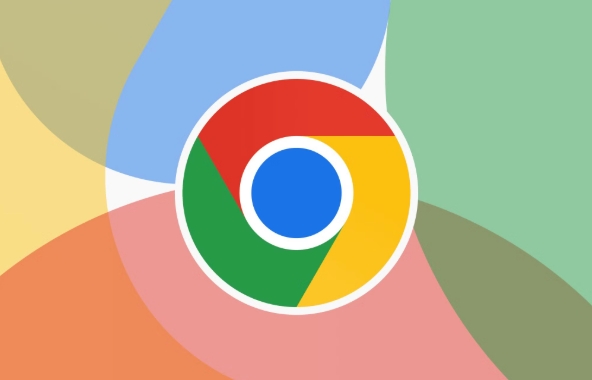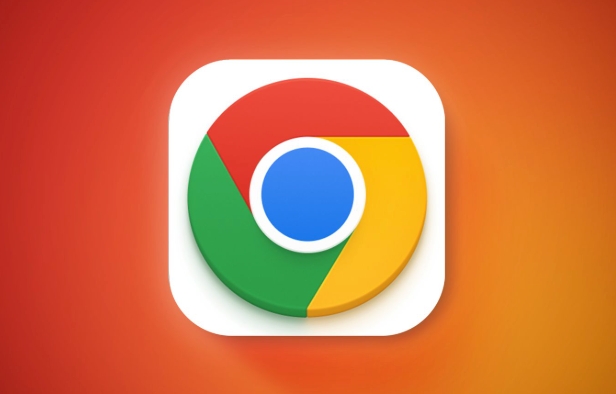Why is Google Chrome autofill not working correctly?
Aug 02, 2025 pm 01:03 PMCheck if autofill settings are enabled and correctly configured under Chrome Settings > Autofill, ensuring addresses, payment methods, and passwords are turned on with accurate information. 2. Verify site compatibility by testing autofill on standard forms, as non-standard or JavaScript-heavy sites may not be recognized; developers should use proper autocomplete attributes. 3. Disable browser extensions like ad blockers or third-party password managers one by one or test in Incognito mode to identify interference. 4. Update Chrome by going to Settings > About Chrome to ensure you’re running the latest version. 5. Resolve sync or profile issues by signing out and back into your Google account or switching to a different Chrome profile. 6. Confirm that autofill data is complete and correct under Addresses and more, removing duplicates or invalid entries. 7. Check for site-specific autofill exceptions in Settings > Autofill > Site Settings and remove any blocks for desired sites. The issue is typically resolved by adjusting settings, disabling conflicting extensions, or verifying website compatibility.

Google Chrome’s autofill feature usually makes filling out forms fast and convenient, but sometimes it stops working properly. If Chrome isn’t autofilling forms as expected, several factors could be at play. Here are the most common causes and how to fix them:

1. Autofill Settings Are Disabled or Misconfigured
The most straightforward reason is that autofill is turned off or not set up correctly.
Check and fix:

- Open Chrome and go to Settings (click the three dots → Settings).
- Click on Autofill in the left sidebar.
- Make sure Addresses and more, Payment methods, and Passwords are enabled.
- Under Addresses and more, ensure your name, email, phone, and address are added and correct.
? Tip: Chrome won’t autofill if the form fields don’t match what it expects. For example, a custom-designed form might not be recognized as a “name” or “email” field.
2. Site or Form Compatibility Issues
Not all websites are built the same. Some use non-standard HTML or JavaScript-heavy forms that Chrome can’t interpret properly.

What to do:
- Try autofill on a standard site like Google Forms or a major retailer (e.g., Amazon). If it works there, the issue is likely the website.
- Developers can fix this by using proper
autocompleteattributes in form fields (e.g.,autocomplete="email"). - As a user, you can manually trigger autofill by clicking the profile icon in the address bar and selecting your info.
3. Browser Extensions or Pop-up Blockers Interfere
Some ad blockers, privacy tools, or password managers (like LastPass or Bitwarden) can conflict with Chrome’s built-in autofill.
Troubleshooting steps:
- Disable extensions one by one to identify the culprit:
- Go to
chrome://extensions - Toggle off extensions, especially password managers or form helpers.
- Go to
- Test autofill after disabling each one.
- Alternatively, try Chrome in Incognito mode (where most extensions are disabled by default). If autofill works there, an extension is likely the issue.
4. Outdated Chrome Version
An outdated browser may have bugs that affect autofill.
Fix:
- Go to Settings → About Chrome.
- Chrome will automatically check for updates and install them.
- Restart the browser after updating.
5. Sync or Profile Issues
If you're signed into Chrome and using sync, corrupted sync data or multiple profiles can cause autofill to fail.
Try this:
- Sign out of your Google account in Chrome, then sign back in.
- Or switch to a different Chrome profile to see if autofill works there.
- You can manage profiles at
chrome://settings/manageProfile.
6. Autofill Data Is Missing or Incorrect
Sometimes Chrome has your info, but not in the right format.
Check:
- Go to Settings → Autofill → Addresses and more.
- Click on your saved address and make sure all fields (especially email and phone) are filled in and valid.
- Remove duplicates or outdated entries.
7. Site-Specific Exceptions
Chrome allows you to disable autofill for specific sites.
To check:
- Go to Settings → Autofill → Addresses and more → Site Settings (or check Content settings).
- Look under Permissions for “Autofill” or “Forms” and see if the site is blocked.
- Remove any exceptions for sites where you want autofill to work.
In most cases, the problem comes down to settings, extensions, or website design. Start with checking your autofill settings and test in Incognito mode — that usually points you in the right direction.
Basically, it’s not always broken — sometimes Chrome just needs the right nudge.
The above is the detailed content of Why is Google Chrome autofill not working correctly?. For more information, please follow other related articles on the PHP Chinese website!

Hot AI Tools

Undress AI Tool
Undress images for free

Undresser.AI Undress
AI-powered app for creating realistic nude photos

AI Clothes Remover
Online AI tool for removing clothes from photos.

Clothoff.io
AI clothes remover

Video Face Swap
Swap faces in any video effortlessly with our completely free AI face swap tool!

Hot Article

Hot Tools

Notepad++7.3.1
Easy-to-use and free code editor

SublimeText3 Chinese version
Chinese version, very easy to use

Zend Studio 13.0.1
Powerful PHP integrated development environment

Dreamweaver CS6
Visual web development tools

SublimeText3 Mac version
God-level code editing software (SublimeText3)
 How to stop Chrome from updating in the background on Mac
Jul 21, 2025 am 12:41 AM
How to stop Chrome from updating in the background on Mac
Jul 21, 2025 am 12:41 AM
To prevent Chrome from automatically updating on Mac, it can be done by disabling update services, modifying permissions, and restricting network access. 1. Use terminal commands to disable the GoogleSoftwareUpdate daemon to prevent background updates; 2. Modify update directory permissions to prevent Chrome from starting the update process by itself; 3. Restrict Chrome's outbound network connection through system firewall or third-party tools to further eliminate update requests. Using these methods in combination can effectively prevent Chrome from being automatically updated.
 How to stop Chrome from automatically opening PDF files
Jul 21, 2025 am 12:09 AM
How to stop Chrome from automatically opening PDF files
Jul 21, 2025 am 12:09 AM
To let Chrome download directly instead of opening it when clicking on the PDF link, 1. Enter chrome://settings/content/pdfDocuments to check "DownloadPDFfilesinsteadofautomatically opening theminChrome"; 2. Check whether there are plug-ins such as Lightpdf or Smallpdf interfering behavior, you can try to disable the test; 3. You can use the developer tools to copy the link and paste the new tag to trigger the download. The above methods can be selected according to the situation.
 How to fix screen tearing when scrolling in Chrome
Jul 25, 2025 am 12:55 AM
How to fix screen tearing when scrolling in Chrome
Jul 25, 2025 am 12:55 AM
The screen tear occurs when the Chrome browser scrolls, which is usually caused by the out-of-synchronization of rendering and refresh. The solutions are as follows: 1. Ensure that hardware acceleration is enabled, you can manually check the settings and restart the browser; 2. Forcefully enable Compositor and related options to optimize rendering; 3. Check the display refresh rate, use single-screen testing, and enable VSync or adaptive synchronization technology on supported devices; 4. Update the graphics card driver or replace the display interface such as using the DP interface. It is recommended to start the troubleshooting with simple steps and gradually adjust to find the best configuration.
 How to fix Chrome profile sync getting stuck in setup
Jul 25, 2025 am 01:10 AM
How to fix Chrome profile sync getting stuck in setup
Jul 25, 2025 am 01:10 AM
The problem of Chrome sync stuck can be solved through the following steps: 1. Check the network connection and Google account status to ensure normal access; 2. Log out and log in to the Chrome account again; 3. Clear the synchronized data and restart the browser; 4. Reset Chrome settings; 5. Try the traceless mode or new user profile. Sequentially checking can effectively restore the synchronization function.
 Chrome keeps opening new tabs by itself
Jul 22, 2025 am 12:22 AM
Chrome keeps opening new tabs by itself
Jul 22, 2025 am 12:22 AM
The problem of Chrome automatically popping up new tabs is usually caused by malicious extensions, advertising scripts, or browser hijacking. The solutions are as follows: 1. Check and uninstall suspicious extensions, especially ad-class plug-ins; 2. Clear browser caches and cookies to eliminate data corruption; 3. Check whether the homepage and default search engine settings have been tampered with and manually corrected; 4. Use antivirus software such as WindowsDefender or Malwarebytes to scan and clear potential malware; 5. Finally, try resetting Chrome settings to restore the default configuration. Troubleshooting in this order can effectively solve most abnormal labeling problems.
 How to fix Chrome opening new windows instead of tabs
Jul 26, 2025 am 01:29 AM
How to fix Chrome opening new windows instead of tabs
Jul 26, 2025 am 01:29 AM
1. Check whether the shortcut attribute has additional parameters and delete it; 2. Clear cache and switch startup settings, or create new user information; 3. Extend the impact and disable the problem plug-in through traceless mode. Chrome pops up new windows instead of tabs usually due to exceptions in shortcut parameters, cache configuration conflicts, or third-party extension interference. Check and adjust the corresponding settings in turn to resolve.
 How to fix Chrome when it's not printing correctly
Jul 26, 2025 am 02:46 AM
How to fix Chrome when it's not printing correctly
Jul 26, 2025 am 02:46 AM
Chrome printing exceptions can be solved in the following ways: 1. Check the printer selection, paper size, orientation, zooming and background graphics settings in the print preview; 2. Try stealth mode to eliminate extended interference and clear cache; 3. Update or reinstall the printer driver, replace the general driver or use the "Print as PDF" method; 4. Finally, you can reset the Chrome settings to restore the default. Most problems can be solved through the first few steps. If they still fail, you can export PDF to print.
 How to use Chrome's built-in 'contrast ratio' checker
Jul 20, 2025 am 12:40 AM
How to use Chrome's built-in 'contrast ratio' checker
Jul 20, 2025 am 12:40 AM
Chrome's "Contrast Ratio" check tool can be found directly under the "Computed" panel of the developer tool, which is used to determine whether the text and background colors meet the accessibility standards. Select the text element when using it, open the color selector next to the "color" property, and the contrast ratio will be displayed at the bottom. If it is below the standard, a red warning will be displayed, and if it is met, it will be green. The WCAG standard requires at least 4.5:1 text and at least 3:1 large fonts to ensure that people with visual impairment can also read clearly. Common questions include light-colored text, similar color matching or picture background interference, etc. This tool is suitable for casual inspection when debugging styles, especially when modifying color schemes or repairing UI components, and it is recommended to evaluate translucent or






